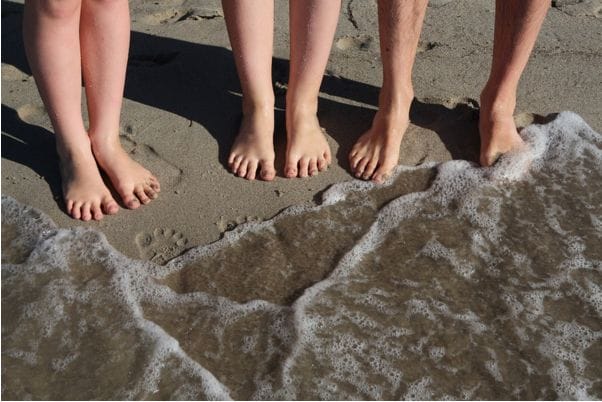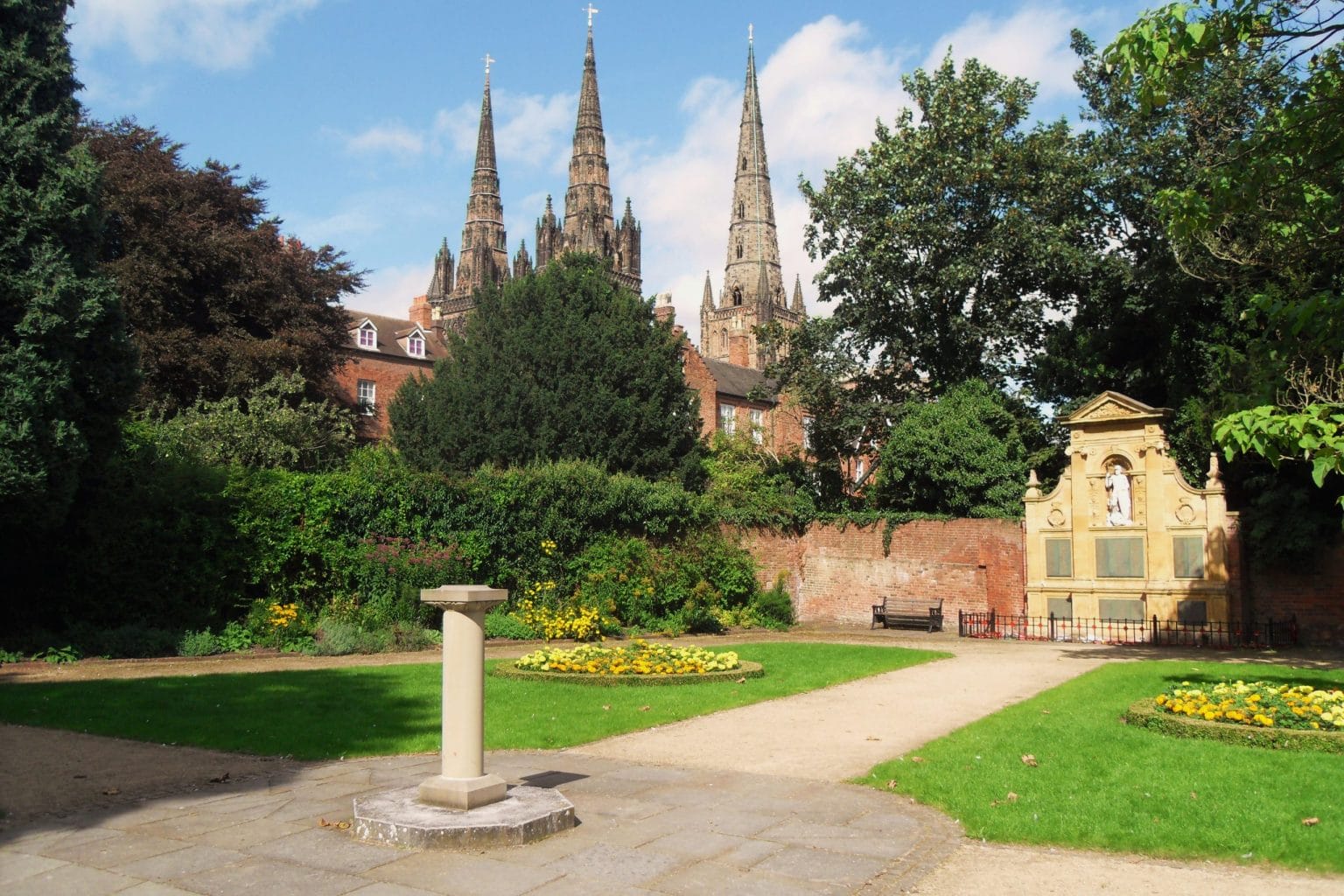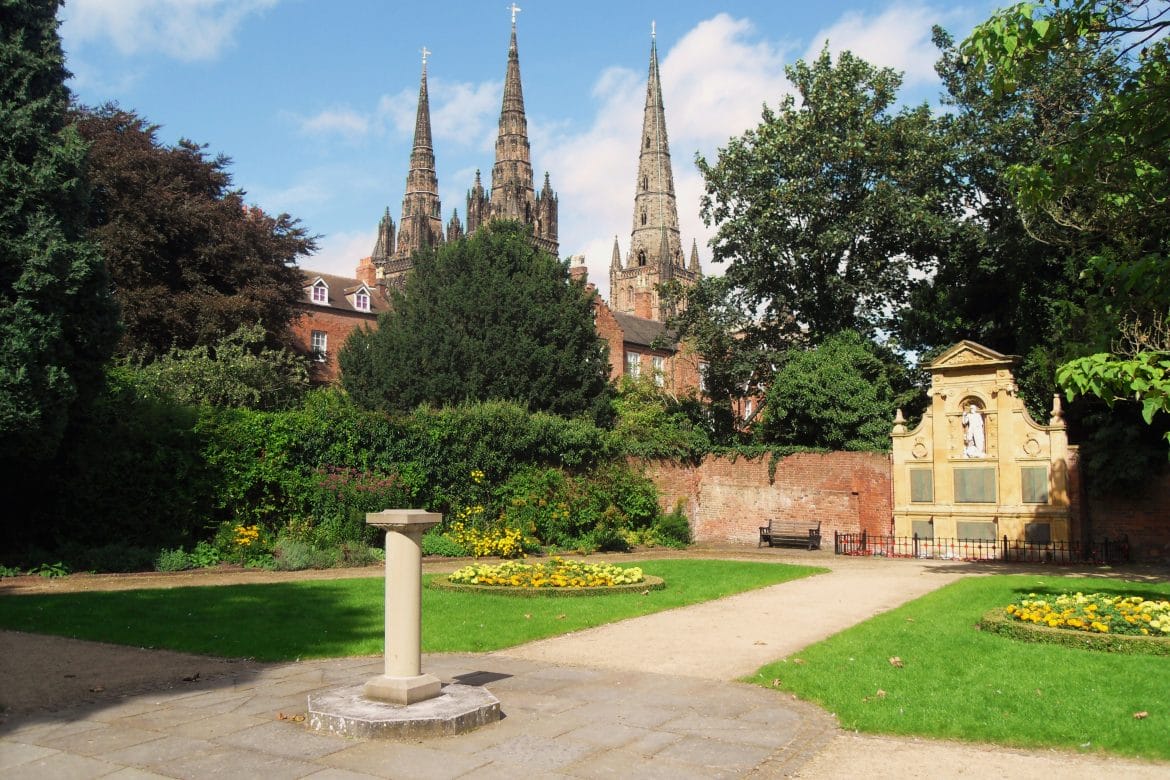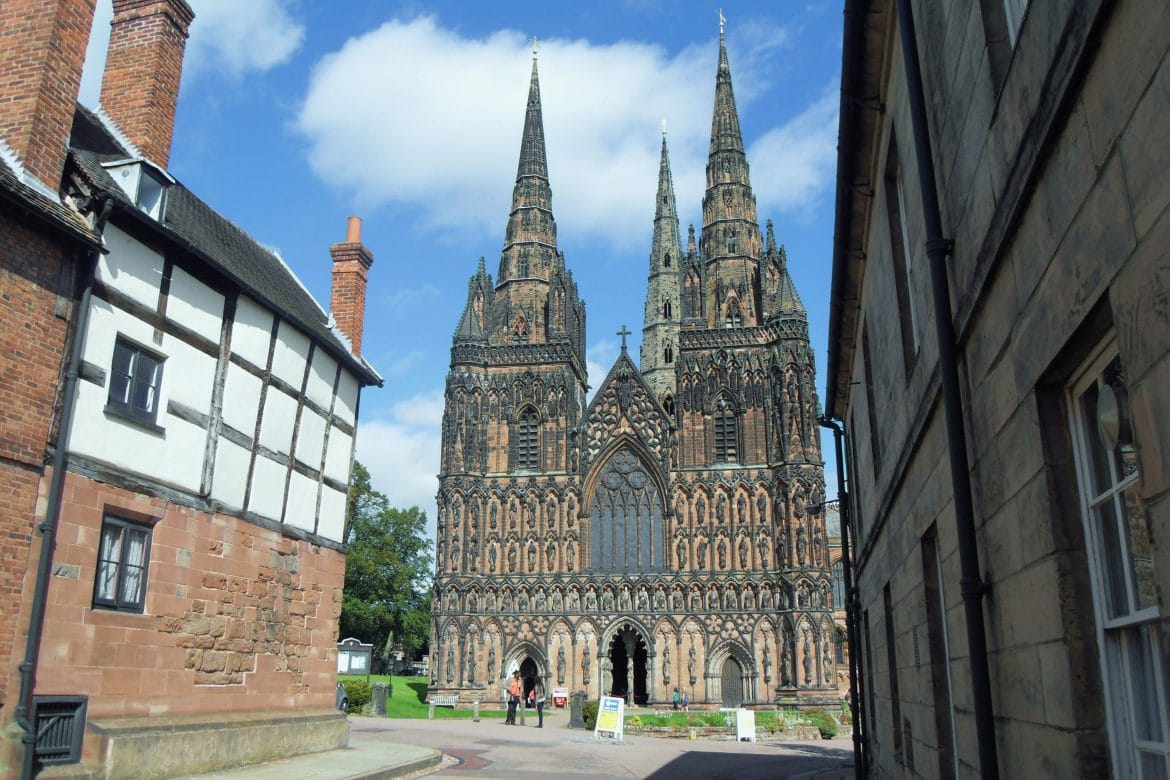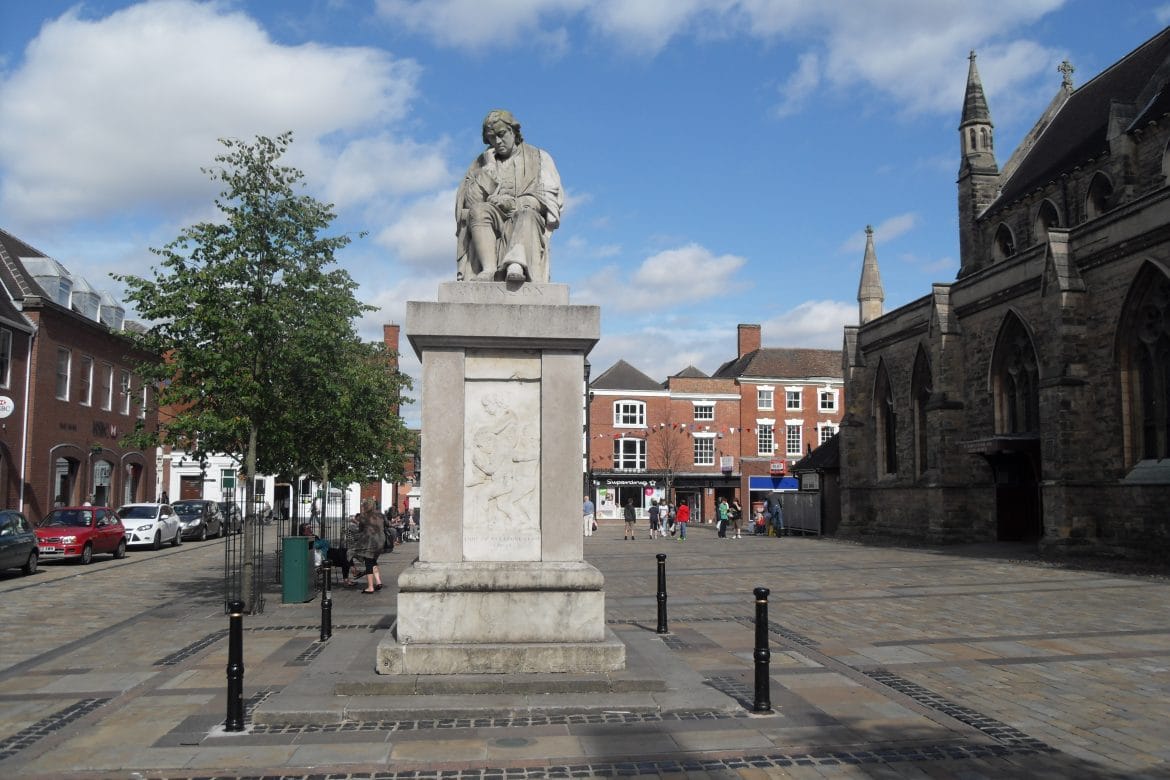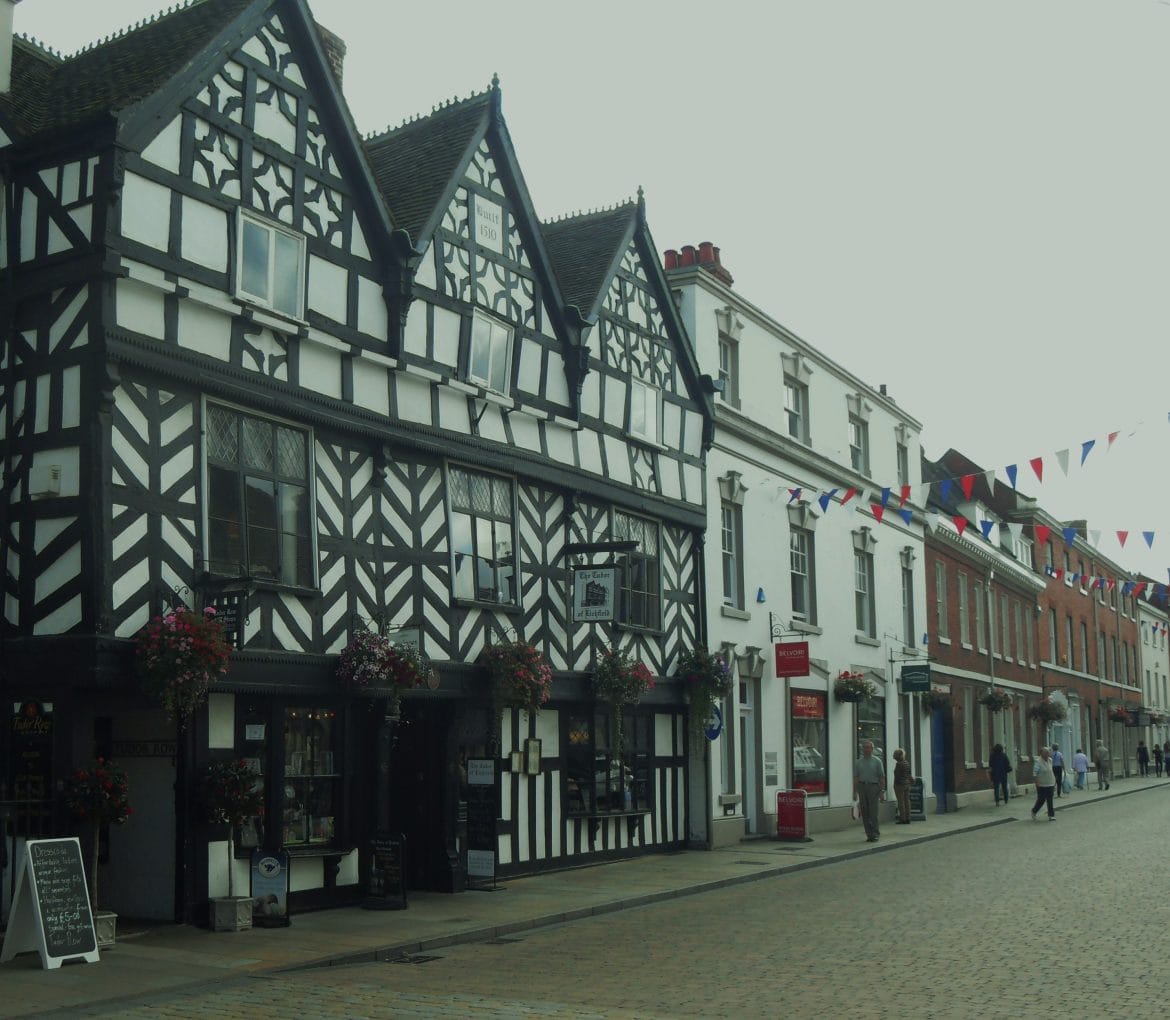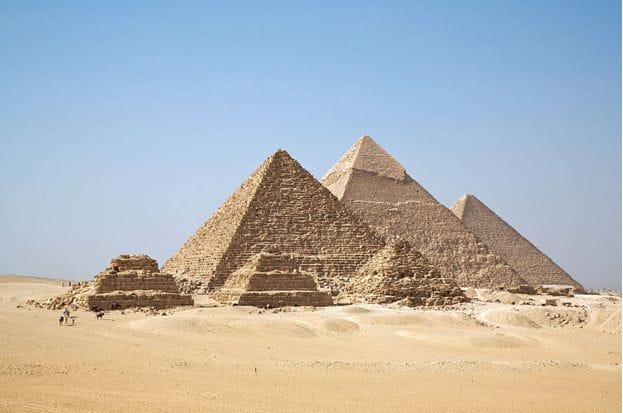Lichfield is Staffordshire’s premier heritage City. So where is Lichfield? Just 17miles from Birmingham with access to the national motorway network and direct rail to London and North, the City is within easy reach of much of the UK. However, for many this hidden gem is just a signpost on the A38 between Birmingham and Derby or a station on the Trent Valley rail line, but increasingly travellers are taking time to break their journey here to experience one of the treasures of Staffordshire and the English West Midlands.
What has Lichfield to offer?
One of the United Kingdom’s smallest Cathedral Cities, Lichfield is noted for its magnificent three-spired medieval cathedral, its association with literary giant Samuel Johnson – writer of the first authoritative Dictionary of the English Language, and the “Staffordshire Hoard”. However these are not the only things Lichfield has to offer.
The City retains an unspoilt Georgian charm, a rich history and a wealth of fantastic period architecture with over 230 listed buildings contained within its medieval street plan. There are superb landscapes, interesting buildings and museums as well as festivals and entertainment that bring its history, people and heritage to life. Added to this is Lichfield culture and hospitality which has developed over several centuries.
The Cathedral
The best way to see Lichfield is on foot. Start in the Cathedral Close which has many fine buildings and is one of the most unspoilt in England. The present gothic Cathedral noted for the 113 statues carved above its main entrance started building in 1195 replacing the previous Norman and Anglo-Saxon religious buildings on the same site. Its three spires can be seen for miles around, are known as the “Ladies of the Vale” symbolising the Holy Trinity – God, Jesus Christ and the Holy Spirit. In medieval times the Close was a fortified area and clues to this can still be seen in Gaia Lane and Dam Street.
During the Civil War the site was besieged by both Royalists and Parliamentarians ending with the Cathedral sustaining considerable damage including destruction of the central spire. Only with the generosity of local benefactors and King Charles II was the Cathedral gradually restored.
Today visitors to the Cathedral can see a unique exhibition of elements of the world famous Staffordshire Hoard – the largest ever find of Anglo-Saxon treasure which was unearthed in a field near the City in 2009. Also exhibited in the octagonal Chapter House are the Cathedral’s own treasures including the Anglo-Saxon “Lichfield Angel”, a sculpture thought to be part of St. Chad’s shrine, and the St. Chad Gospel an illuminated 8th-century manuscript, which is older than the famous Book of Kells.
The Cathedral also plays host to arts and music festivals, and is the main venue for The Lichfield Festival which usually takes place in July each year.
Walks and Vistas
The peal of the Cathedrals 10 bells – some of the finest in the world –can be heard across the City. Likewise the Cathedral can been seen from most parts. However, the most beautiful vistas of the Cathedral are from St. Chads Church across Stowe Pool and along the Minster Pool Walk. The Memorial Garden provides a framed view of the cathedral spires, while the prospect from Beacon Park and Museum Gardens has the added interest of several monuments, including a statue of Edward Smith Captain of the ill-fated Titanic sculpted by the widow of Captain Scott of the Antarctic.
A great way to get to know the City is to follow the Heritage Trail, a self-guided tour following the several “interpretation Boards” that help you discover some of Lichfield’s heritage through the stories of its people and buildings. In addition the City run occasional Green Badge Guided walks providing a wide range of tours around the City for all the family to enjoy including the Gruesome & Ghostly, Secret Gardens and Georgian Gems. There is also a self guided Trail especially for kids- all Trail details available from the City Tourist Office.
Market Square
The Market Square has been the centre of activity for almost a thousand years. Here there is a statue of Lichfield’s most famous son Dr. Johnson, directly opposite his birthplace on Breadmarket Street – now the Samuel Johnson Birthplace Museum & Bookshop dedicated to the life and works of “arguably the most distinguished man of letters in English history”. On the other side of the Square is St. Marys Church now the Lichfield Heritage Centre (and Tourist Office) where the story of the City and its heritage can be discovered, including an opportunity to view the City from the 40 metre high Spire Platform.
Plaques in the Square record the deaths of 3 Protestant Martyrs “burnt at the stake” for “heresy”, and the unfortunate Edward Wightman who was the last man in England to be executed in this way in 1612. However today the Market seems a long way from this gruesome past with its colourful stalls which continues (today on Tuesday, Friday and Saturday) as it has done since its Charter from King Stephen in 1153.
The Square is also the location of ancient and modern festivals, fairs and ceremonies. The Shrovetide Fair and Pancake Toss is held every year on Shrove Tuesday opened with ancient ceremony and probably in existence long before it was confirmed by Royal Charter of James 1 in 1623. Dr Johnson Birthday Celebrations are also held on Market Square, the Saturday following the 18th September and it is preceded by the “Sheriffs Ride” on 8th September which begins around the corner outside the Guild Hall.
Lichfield Bower is the biggest celebration; dating back to the Middle Ages it takes place on Spring Bank Holiday Monday. There is a procession of marching bands and carnival floats snaking through the city streets with the Bower Queen crowned outside the Guildhall at noon. There is also a fun fair in the Square, and a fair and jamboree in Beacon Park.
Antiques & Crafts
If you need some retail therapy Lichfield has a good range of shopping including art, craft and antique shops, jewellers, antiquarian booksellers and curios. You will also find high street favourites including a Debenhams Department Store in the Three Spires Shopping Centre. The Lichfield Antiques Centre based in a former Victorian School building off Minster Pool Walk was featured on a recent programme of the BBC Antiques Road Trip series, while the Cathedral has played host to the Antiques Roadshow. The Guild Hall and Heritage Centre both also host regular collectors fairs, and Richard Winterton the local Auctioneers hold weekly valuation and monthly auctions in their City Centre Salerooms.
Coaching Inns and Hostelries
Through the 18th century Lichfield developed as a key coaching centre on the “turnpike” routes from London to the North West, and Bristol to the North East. There were 80 Innkeepers registered in 1732 and some of the principal Coaching Inns continue today with obvious signs of their coaching past – the George Hotel, The Swan and The Kings Head all located in Bird Street, while The Scales in Market Street got its name as a place where jockeys came to be weighed.
For such a small City there are many surviving historic pubs such as the Duke of York (over 400 years old) with its own bowling green. These have now been supplemented by a number of cafes, bistros and restaurants. Chapters, the Cathedral restaurant and coffee shop is located in an elegant 17th Century setting directly opposite the Cathedral but perhaps the most famous is the listed black and white timber framed Tudor House in Bore Street, built in 1510 and operated as a “tea house” since 1935 –a popular place to enjoy tea and cakes as well as their local homemade chocolates, or perhaps a three spires ice cream.
Famous Sons of Lichfield
The 18th Century was the golden era for the City. The coaching trade enabled the City to become Staffordshire’s social centre and most prosperous town. This also heralded Lichfield’s development as a centre of intellectual activity, being associated with a number of famous figures of the age – an association which prompted Johnson to remark “we are a city of philosophers”. Erasmus Darwin, Elias Ashmole, Joseph Addison, Samuel Johnson and David Garrick were all Lichfeldian intellectual celebrities of their day – the latter 3 all honoured by burial at Westminster Abbey.
Ashmole the antiquary, born in Breadmarket Street in 1617 donated his lifetime collections, antiquarian library and priceless manuscripts to the University of Oxford to create what is now the world famous Ashmolean Museum. The home of Erasmus Darwin in Beacon Street is now a Museum dedicated to his activities as leading doctor, scientist, botanist and philosopher. His work greatly influenced his grandson Charles Darwin – the famous naturalist and author of ‘The Origin of the Species’ – and Erasmus is now referred to as the Grandfather of Evolution!
David Garrick pupil and friend of Dr Johnson lived in the (now demolished) Old Library in Bird Street before making fame and fortune as an actor, producer and playwright in London. He was the greatest actor of his age but his fame endures through his name – the Garrick Theatre in London’s West End and of course the Lichfield Garrick, the modern, purpose built theatre on Castle Dyke.
The Friary, Monks Walk & St John’s Hospital
One of the finest 15th century brick buildings in the country, St Johns Hospital was originally founded in the 12th century to provide accommodation for pilgrims and travellers who arrived at Lichfield after the city gates had been closed at night. In the 15th century it became a free grammar school and a home for aged men, a role it still performs today.
Visitors are welcome to see the Hospitals Tudor buildings, explore the chapel or simply experience the calm and tranquility of the beautiful surroundings. The garden houses a section of the historic Monks’ Walk which would have linked St John’s to the Franciscan Friary. The other section of Monks Walk – now planted with herbs and medicinal plants contemporary with the Friary – can be accessed from the rear of Lichfield Library in Friary Street.
The Franciscan Friary existed on this site from 1230, but was demolished on orders of Henry VIII in 1538. The only element of the original Friary building now remaining is the old Bishops Lodgings at the south west end of Lichfield Library (known as the Friary). The excavated foundations of the Friary church, cloister and refectory can be seen on the scheduled ancient monument site opposite the Library and now laid out as a public garden.
Nearby Attractions
There is plenty to occupy your attention for a day in Lichfield but If you are staying longer, there a number of nearby attractions that are also worth a visit –
The National Arboretum, Alrewas.
The National Brewery Centre, Burton-upon Trent.
The Staffordshire Regiment Museum, Whittington.
Shugborough Hall – the ancestral home of the Earls of Lichfield, near Stafford.
Drayton Manor Theme Park, Tamworth.
The National Football Centre – St Georges Park, near Burton-upon Trent.

